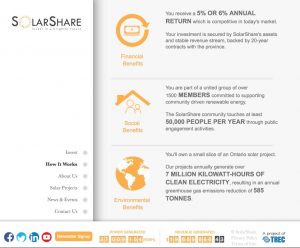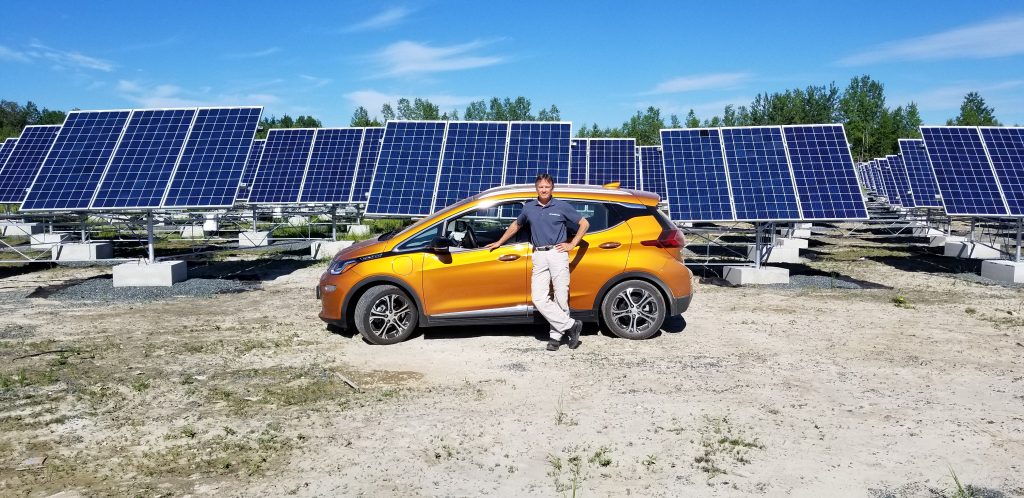By David Dodge & Scott Rollans
Ontario’s SolarShare is North America’s largest renewable energy cooperative, with $60 million in projects—but its beginnings were much more humble.
“I bought a cottage in 1985 that had no electricity or running water,” explains Mike Brigham, SolarShare’s co-founder and president. “I decided to put solar on it rather than connect to the grid, so I could live off-grid there in the summer. I just became such a believer that solar is absolutely the power source that should be powering the world.”
The cooperative was founded under the auspices of the Toronto Renewable Energy Cooperative, better known simply as TREC.
Brigham joined TREC in 2007, shortly after the organization spun off a wind energy coop. He advised them, “If you guys ever want to do solar, I’d be interested. Little did I know I’d be handed the starter pistol and told to take charge of it,” says Brigham.
Eight years later, SolarShare has attracted $36 million from investors and has completed 49 solar energy projects in Ontario—and counting.
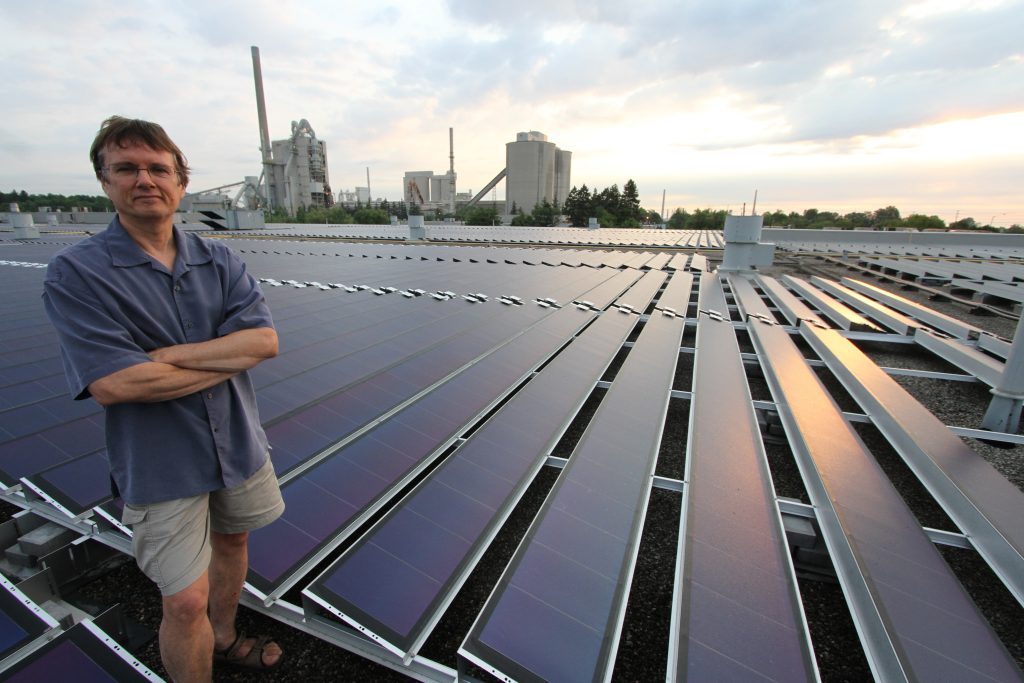
Mike Brigham of SolarShare at the WaterView Solar project in Mississauga, Ontario. Photo David Dodge, GreenEnergyFutures.ca
Brigham the solar evangelist
Brigham works full time for SolarShare, but purely on a volunteer basis. He earns his income as the retired owner of Brigham Enterprises, Inc., which manufactures tobacco pipes.
As an advocate for solar energy, Brigham felt confident he could attract investors. “The real trick is, how do you engage people and how do you get people talking to you?”
The numbers certainly give him a foot in the door. “We have two sets of bonds: we have a 5-year bond that earns five per cent per year, and a 15-year bond that earns six per cent per year,” explains Brigham.
Initially attracted by the promise of such excellent returns, investors become even more sold once they perform their due diligence. “In checking us out to … verify that it is a wise investment, they inadvertently start to learn about what a great energy source solar is,” says Brigham. Today Solar-Share has 1,600 investors, with roughly half of its new investments coming from repeat investors.
Most of SolarShare’s early investors were specifically eco-oriented, but the co-op has since gone mainstream. Recently, it attracted its first million-dollar investor.
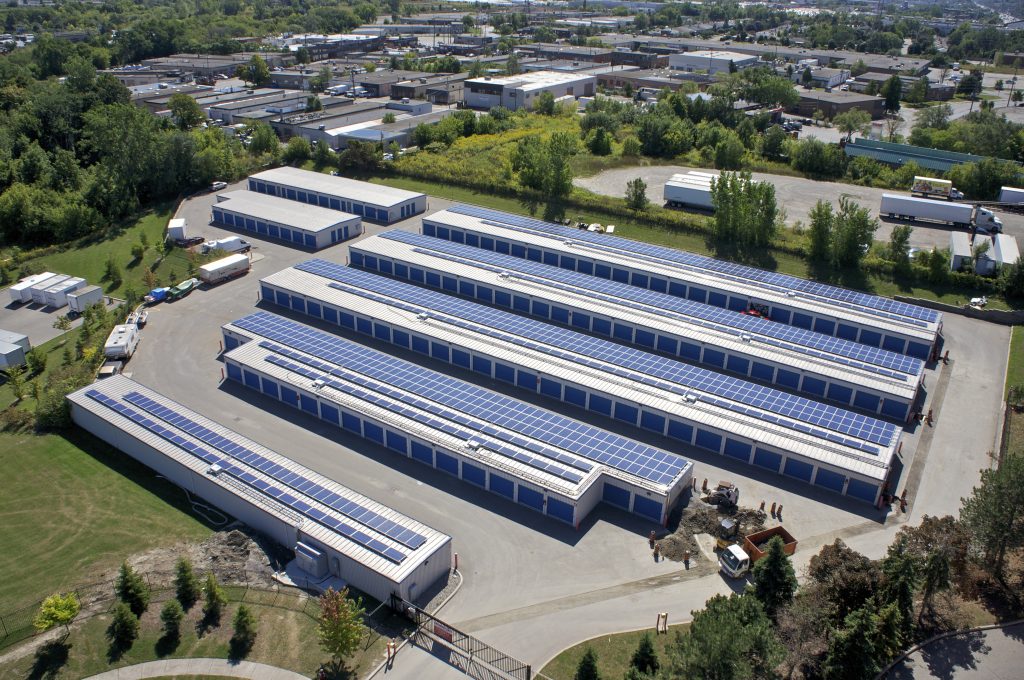
The 250 kilowatt Summerville project in Mississauga, Ontario, one of 49 projects developed by SolarShare, the largest renewable energy coop in North America. Photo SolarShare
“What appeals to people who are over 40 or 50 is that our five-year bonds are RRSP-eligible, RIF-eligible and tax-free-savings-account-eligible,” says Brigham.
SolarShare currently boasts installed capacity of 12 megawatts of solar in Ontario. Its first breakthrough was Mississauga’s Waterview project—320 kilowatts of thin-film solar installed on 2.2 acres of roof space on what is now the Ford Parts Distribution warehouse. “It’s huge,” Brigham marvels. “I had never seen such a large rooftop system before.”
Now installing Morgan Solar trackers
“We’ve done rooftop projects mostly ever since, until about a year ago when we started doing ground mount projects,” says Brigham. “The last six megawatts of projects that we’ve done in the last year have been a new type of tracker technology from a firm called Morgan Solar here in Toronto.”
Morgan Solar produces a product called Savanah trackers, devices that follow the sun across the sky and keep solar modules aimed squarely at the sun. Brigham says these trackers increase solar production by 28 per cent.
The trackers even respond to weather conditions, says Brigham. “If snowstorm is coming we can say, okay, go vertical and aim south. So, you don’t collect too much snow. If there’s a big storm front coming, we can say go horizontal to protect yourself from high wind gusts.”
SolarShare now has 11 systems operating with this technology, mostly around 500 kilowatts in capacity. “We’re just working some of the final bugs out of them now. They seem to be operating pretty well,” Brigham says.
The post-feed-in-tariff world
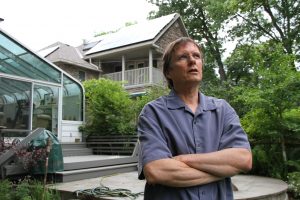
Mike Brigham says SolarShare is now looking at net-metering as a source of revenue for new projects. Photo David Dodge, GreenEnergyFutures.ca
So far, SolarShare’s success has been tied to Ontario’s feed-in-tariff (FIT) programs, which pays a fixed rate for solar power in long-term contracts. The contracts range from 29 cents to 80 cents/kilowatt hour. With the end of FIT, SolarShare must adapt quickly.
“The last of the contract offers being made under the feed-in-tariff program have been given,” says Brigham. “Everybody in the market is working toward doing what are called net-metering or virtual net-metering systems.”
That kind of arrangement is tougher in a place like Alberta, where people who feed their excess solar power into the grid are paid only the current electricity rates. That number ranges from five to eight cents per kilowatt hour.
However, in remote areas in Ontario, such as cottage country, electricity can cost people as much as $1 per kilowatt hour. For cottage owners, solar with energy storage already makes economic sense. The situation is a little trickier for regular homeowners, whose higher demands make it more difficult to cope with being off-grid. SolarShare and other renewable energy developers are now crunching the numbers to find viable ways to continue expanding Ontario’s renewable energy capacity in the post FIT era.
Meanwhile, SolarShare has to fend off skeptics who blame renewables for spiking electricity prices in Ontario. Brigham believes much of the blame lies with nuclear. “There’s just been up a filing with the Ontario Energy Board by the big generator here, Ontario Power Generation, for $13.8 billion additional charge that they want to pass on to customers—basically to cover nuclear plant refurbishments and cost overruns.”
Moreover, says Brigham, nuclear plants run at one speed. “So, they produce way too much electricity at night, which in some cases gets dumped. Or, people get paid just to consume it—it’s a complete waste.
“Solar is just the opposite. It doesn’t produce it at night when we don’t need it, but in those hot sunny summer days, when everybody’s got the air conditioning cranked, that’s exactly when the solar systems are putting out [electricity].”
What’s a solar guy to drive?
Brigham’s passion for solar also extends to electric cars. He bought one of the first Prius hybrids, drove it for almost 20 years, and then replaced it with a Chevrolet Volt, a plug-in hybrid. Recently, he went all-electric.
“For one year now, I’ve been driving a pure electric vehicle, a Chevrolet Bolt—bolt, like a lightning bolt—and loving it, just loving it,” says Brigham. “They go like little rockets, they’re dead quiet, and with only 18 moving parts the maintenance on them is about as close to zero as you can possibly get.”
When Brigham goes to his cabin, he plugs in at the marina (they don’t charge him for this); his 500-km round trip ends up costing him about $8 total, he says.
Brigham still hopes to bring SolarShare to $100 million in investment. That said, with the end of FIT, and with ongoing competition from cheap foreign capital, it seems certain SolarShare’s business plan will continue to evolve.

